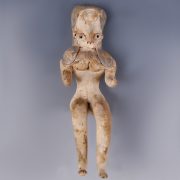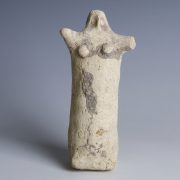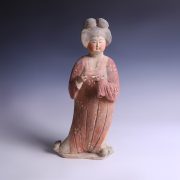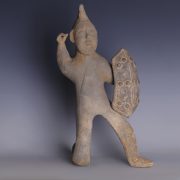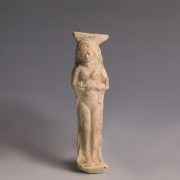The Neo-Hittite civilisation, also known as Syro-Hittite, existed during the Iron Age in northern Syria and Southern Anatolia. The Hittite empire collapsed around 1180 BC: it was followed by the decline of the Eastern Mediterranean trade networks, and the fall of the major late Bronze Age cities in the Levant, Anatolia, and the Aegean.
Many of these small bronzes would have served as votive for cult worship, though they did not represent the cult images themselves. They would have been placed prominently amongst other statues, pottery, jewellery, and weapons, in order to gain the favour of relevant supernatural forces. If not displayed publicly, these bronze statuettes might have served as idols in private homes: indeed, as is the case for numerous historical periods and civilisations across the world, ritualistic religious practice was an integral part of daily life in Syro-Hittite culture.
Terracotta was a common substance used in the art of sculpture. Easy to shape and durable once baked this material provided a long lasting and detailed imagery of the ancient fertility goddesses. These female deities were embodied within the statuettes, their sexual characteristics and body areas associated with childbirth were fully displayed and exaggerated.




